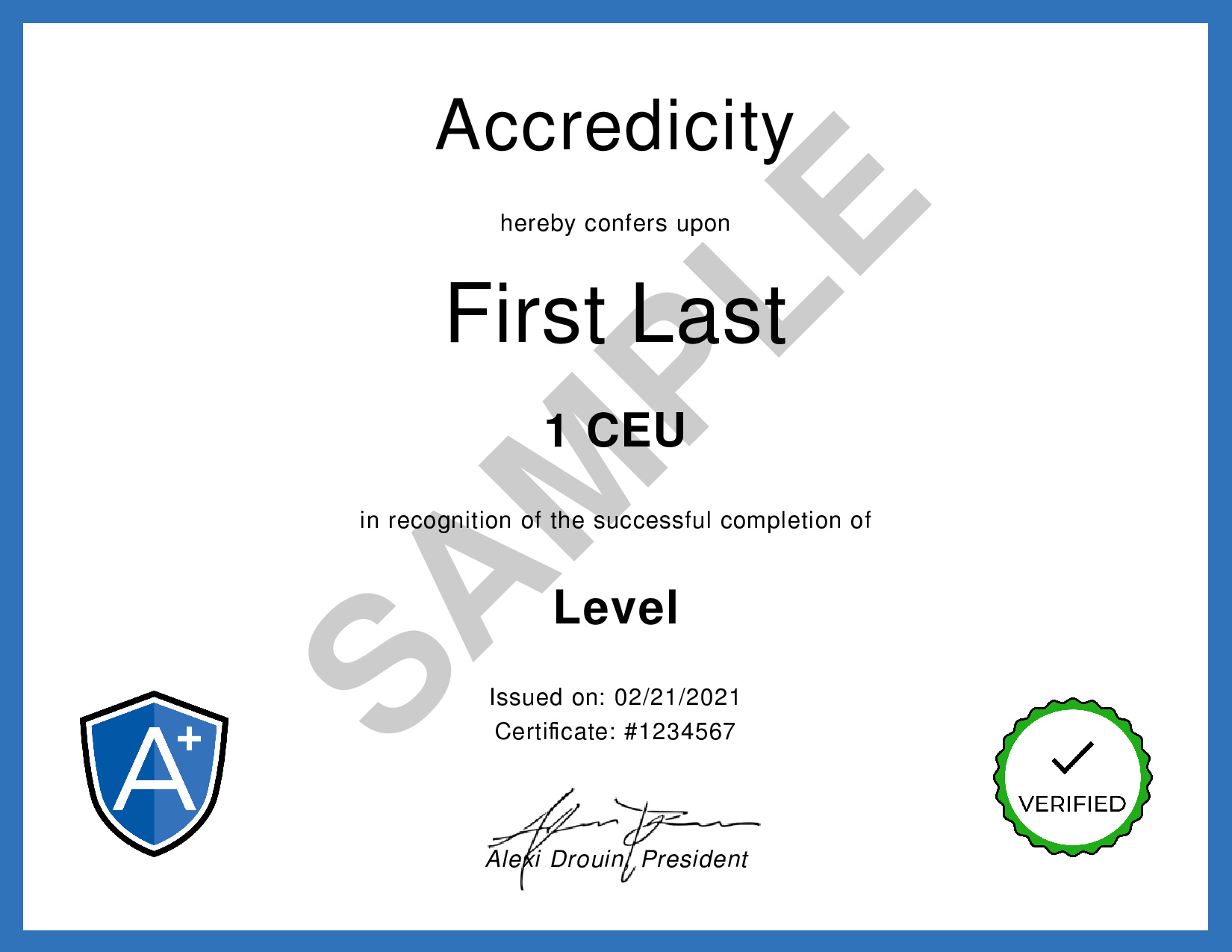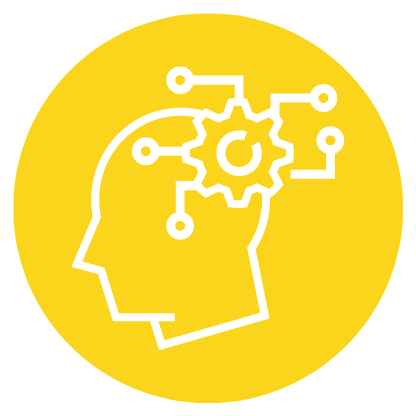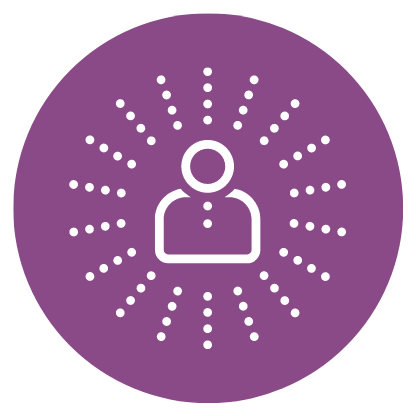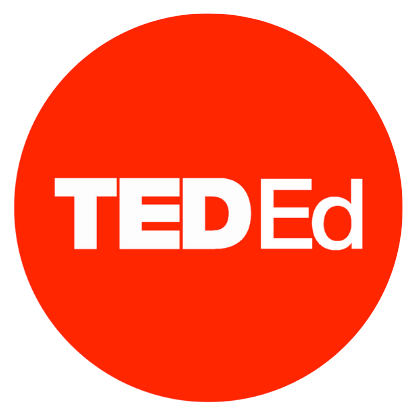What Is Consciousness? – Michael S. A. Graziano | TED-Ed
We Make Your Education Count

Get the Credit You Deserve and Become the Most Attractive Job Candidate by Earning and Posting A+ Badges to Your Linkedin Profile.
Sign Up to Get Started at Accredicity
Discover the secrets behind consciousness and the brain's processing of information with this intriguing video.In this TED-Ed video, Michael S. A. Graziano discusses the question "What is consciousness?". He focuses on a patient, P.S., who had a stroke which damaged the right side of her brain, leaving her unaware of the left side of her field of vision. Despite this, when asked which house she wanted to live in, she chose the one that wasn't burning. This demonstrates the distinction between the brain's processing of information and the experience of that processing which is what we call consciousness. Graziano explains how consciousness is related to the brain's models of itself, namely its ability to pay attention and focus on specific objects and events. He suggests that consciousness could be the brain's imperfect picture of its own activity and that MRI studies are a promising avenue for understanding how the brain's networks related to consciousness work. Learning Outline- Hemispatial neglect reveals an important distinction between the brain’s processing of information and our experience of that processing Instructional ContentWhat is Consciousness? Consciousness is the experience of being aware of ourselves and the world around us. It is the way we perceive things, feel emotions and thoughts, and act on our environment. But where does this unique experience come from? Scientists, theologians, and philosophers have been trying to answer this question for centuries, without reaching any consensus. Recently, a new theory has emerged that consciousness is the brain’s imperfect picture of its own activity. To understand this theory, it helps to understand how the brain processes information from our senses. Based on sensory input, it builds models, which are simplified descriptions of objects and events in the world. Our perception of the world is based on these models, which never capture every detail of the things they describe, but are good enough for us to function. Scientists have begun to explore how the brain creates this self-model and MRI studies are a promising avenue for pinpointing the networks involved. Patients with hemispatial neglect, for instance, typically have damage to one particular part of this network. More extensive damage to the network can sometimes lead to a vegetative state, with no sign of consciousness. Though science has advanced our understanding of consciousness, there is still much more to learn. As we continue to explore questions of consciousness with science, we’ll open new lines of inquiry into human identity. To gain a better understanding of consciousness, watch the video “What is Consciousness?” by Michael S. A. Graziano. Cognition
|

Consciousness is like a house with a burning roof - it's the way we experience the world and everything in it, like how we can see a house even though it's burning. When something in our brain isn't working right, like when a patient has a stroke, they can't always be aware of things on one side, but their brain is still processing information from all around them. So even though they might not know why, they still duck when a ball is thrown at them. Consciousness is like a simplified description of the world and ourselves, like how we think of white light being bright without color even though it's not true. Scientists have been trying to figure out where consciousness comes from for centuries, and one idea is that it comes from the brain's imperfect picture of its own activity. Quotes1. “The brain needs models of itself in order to control focus effectively” - Michael S. A. Graziano 2. “Our certainty that we have a metaphysical, subjective experience may come from one of the brain’s models” - Michael S. A. Graziano 3. “What is consciousness?” - Michael S. A. Graziano Competencies1. Cognitive Flexibility Learning Outcomes1. Analyze the difference between the brain’s processing of information and an individual’s experience of that processing (Consciousness). Sample Answers1. I learned that consciousness is the experience of processing information from our senses, such as our vision and internal thoughts and emotions. It is the brain's imperfect picture of its own activity, and it is built on models that keep track of the external world and our internal selves. 2. I learned that hemispatial neglect, like P.S., reveals an important distinction between the brain's processing of information and our experience of that processing. MRI studies can be used to compare patterns of neural activation when someone is and isn't conscious of a sensory stimulus. 3. I learned that scientists are still trying to figure out how the brain creates a model of its own information processing. More research is needed to understand how neurons in the networks related to consciousness compute specific pieces of information. Michael S. A. GrazianoMichael S. A. Graziano is a professor of psychology and neuroscience at Princeton University. He is also the director of the Princeton Neuroscience Institute and author of several books, including "The Spaces Between Us: A Story of Neuroscience, Evolution, and Human Nature." Graziano is an expert on consciousness because of his extensive research into the neuroscience of consciousness and his work on the neuronal mechanisms of awareness. He is also the director of the Princeton Neuroscience Institute's Consciousness Studies Group, which focuses on understanding the neural underpinnings of consciousness. Michael S. A. Graziano is affiliated with Princeton University. Learning DesignCognitive Flexibility, Critical Thinking, and Self-Awareness are all important skills to have in order to effectively navigate today's world. Cognitive Flexibility is the ability to think flexibly and to switch between different mental processes in order to think creatively and solve problems. Critical Thinking is the ability to analyze and evaluate information in order to draw conclusions and make decisions. Self-Awareness is the ability to reflect on one's own thoughts, feelings, and behaviors in order to understand oneself better. In order to build these competencies, students can use a variety of frameworks and pedagogy. For Cognitive Flexibility, students can use the Cognitive Flexibility Theory, which emphasizes the importance of being able to switch between different mental processes and strategies in order to think creatively and solve problems. For Critical Thinking, students can use the Socratic Method, which encourages students to think critically and analytically by asking questions and examining evidence. For Self-Awareness, students can use mindfulness-based approaches, which emphasize the importance of reflective practices and self-observation. Overall, these three competencies are important for students to learn in order to effectively navigate today's world. Through the use of various frameworks and pedagogy, students can develop their cognitive flexibility, critical thinking, and self-awareness skills. AssessmentQ: What can we learn from the study of hemispatial neglect patients like P.S.? Answer: C. The brain's self-model may be the source of our subjective experience QuestionsQuestions for Students: Questions for Real-Life Application: KeywordsHemispatial Neglect, Visual Processing, MRI Studies, "White Light Brightness", Brain Model, Consciousness Theory, Neural Activation, Vegetative State Facts1. Consciousness is the brain's experience of its own information-processing activity. Trends1. Develop an immersive virtual reality experience that recreates the experience of hemispatial neglect. SourceThis learning instructional guidance was formulated using the GPT-3 language model created by OpenAI. ShareWhat is consciousness? Scientists, theologians, and philosophers are still trying to figure it out. Recent research suggests that it may be the brain's imperfect picture of its own activity. #Consciousness #Philosophy #Neuroscience 🤔 @Accredicity |








 25 Creds - Cognition
25 Creds - Cognition



